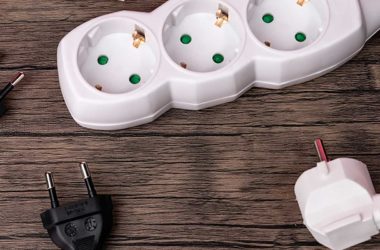In today’s rapidly changing world, the need for sustainable solutions to combat environmental challenges has become more urgent than ever. Engineers and innovators around the globe are trying to create ground-breaking technologies that pave the way for a greener and more sustainable future.
Table of Contents
- Smart Grids: Efficient Energy Distribution
- Vertical Farming: Growing Food Sustainably
- Hyperloop: Revolutionising Transportation
- RoboBees: Pollination Reinvented
- Solar Impulse Plane: A Journey Toward Sustainable Aviation
- Seabin: Cleaning Our Oceans
- Ocean Thermal Energy Conversion (OTEC): Tapping into the Power of the Ocean
- FlexiWings: Nature’s Design for Wind Turbines
- Self-Healing Materials: Prolonging Lifespan and Reducing Waste
- Carbon Capture and Storage (CCS): Mitigating Climate Change
Smart Grids: Efficient Energy Distribution
Meeting the rising energy demands of society while reducing their environmental impact is not an easy task with traditional power systems. Some of the reasons are costs, energy losses and limited integration of renewable energy. Smart grids, which are made possible by advanced sensors, communication networks, and data analytics, offer a solution to these issues.
Through dynamic changes in supply and demand, these intelligent energy distribution networks optimise the generation, delivery, and consumption of electricity. Smart grids enable the integration of renewable energy sources, energy storage, and real-time monitoring which results in reduced carbon emissions, improved energy efficiency, and opens the door for future energy production that is more sustainably produced.
Vertical Farming: Growing Food Sustainably
Population increase and urbanisation are two factors that strain traditional agricultural practices. One solution to this is vertical farming, a cutting-edge method of producing food. Through the use of vertical space and cutting-edge technology like LED lighting and hydroponics, engineers have developed vertical farms that allow crops to be grown indoors, nearer to metropolitan areas.
Many organisations and brands, like Würth Elektronik or Intelligent LED Solutions specialise in the production of LED solutions for modern farming and horticulture. This technique minimises the requirement for a lot of land, uses less water, and does away with the need for pesticides. In addition to ensuring a steady supply of food, vertical farming lessens the environmental impact of conventional farming methods.
Hyperloop: Revolutionising Transportation
Elon Musk’s and SpaceX’s Hyperloop concept captivated the interest of engineers and transportation enthusiasts across the globe. The goal of this futuristic transportation system is to move cargo and people quickly using low-pressure tubes. The Hyperloop has the potential to greatly cut travel times, energy consumption, and carbon emissions by employing electric propulsion and magnetic levitation. Despite being in its infancy, the technology is a promising advancement in environmentally friendly transportation and has the power to completely alter the way we commute. Here is more information about high-speed trains.
RoboBees: Pollination Reinvented
“If the bee disappeared off the surface of the globe, then man would have only four years of life left. No more bees, no more pollination, no more plants, no more animals, no more man.”
Albert Einstein
Because bee populations are declining, pollinators play an ever-more-important role in guaranteeing food security. RoboBees are autonomous drone robotic pollinators. With GPS, high-definition cameras, and artificial intelligence these drones imitate bee activity. RoboBees boost crop yields and improve pollination by gathering pollen grains on their horsehair-coated undersides and moving them from blossom to flower. In addition to assisting farmers in meeting the increasing need for food supply, this technology enhances crop quality overall and encourages genetic diversity.
Solar Impulse Plane: A Journey Toward Sustainable Aviation
The Solar Impulse aircraft, designed by engineer Bertrand Piccard and his team, is a major advancement in environmentally friendly aviation. This innovative aircraft uses 17,000 integrated solar cells and ultra-light materials to power its four electric motors using renewable energy. The plane can fly even at night because the solar cells charge the energy-dense lithium batteries during the day (more on the importance of batteries in renewable energy transition here).
The Solar Impulse plane inspires and increases awareness about the potential of clean-tech and renewable energy sources in the aviation industry by completing the first-ever round-the-world solar flight. If you are curious about the future of green aviation, and if it is possible, read our article on this page.

Seabin: Cleaning Our Oceans
Ocean is one of the biggest and most important habitats and we should live in harmony with it as it gets more polluted which results in a danger for human health and marine ecosystems.
The Australian co-founders of the Seabin Project, Pete Ceglinski and Andrew Turton, have devised a creative solution to help reduce the ocean plastic pollution. The Seabin is a floating container with a built-in bag that efficiently collects debris by drawing water from the surface and directing it through a submersible water pump. The Seabin targets trash in marinas and ports and helps to improve overall water quality by having the capacity to gather a portion of oils and pollutants on the water’s surface. This environmentally friendly technology has a lot of potential to protect marine life and preserve our oceans.
Ocean Thermal Energy Conversion (OTEC): Tapping into the Power of the Ocean
The vastness of the ocean presents a great opportunity for the production of renewable energy. A technique called Ocean Thermal Energy Conversion (OTEC) uses the temperature differential between warm surface water and chilly deep water to produce energy. Similarly to geothermal energy, OTEC systems employ heat exchangers and turbines to transform thermal energy into useful power. Utilising the ocean’s consistent temperature gradient, OTEC presents a viable substitute for conventional energy sources and holds promise for supplying coastal areas with clean, renewable energy. Read more on how ocean’s water can change the world.
FlexiWings: Nature’s Design for Wind Turbines

Engineers have always been captivated by the effective and adaptable design of insect wings. These complex structures inspired physicist Vincent Cognet to develop FlexiWings, a revolutionary advancement in wind turbine technology. FlexiWings can optimise pitch angles in response to centrifugal and wind forces by mimicking the flexible structure of insect wings, which leads to an impressive 35% increase in energy production efficiency. These insect-inspired wind turbine blades have the potential to become a viable substitute for fossil fuels.
Self-Healing Materials: Prolonging Lifespan and Reducing Waste
Self-healing materials could revolutionise a number of industries, including electronics and construction. Engineers have developed innovative materials with self-repairing capabilities to minimise the need for expensive replacements and repairs when they get damaged. When a crack or other damage occurs, these materials’ microcapsules or vascular networks release healing agents. Self-healing materials help create a more resource-efficient and sustainable economy by prolonging product lifespans and decreasing waste.
Carbon Capture and Storage (CCS): Mitigating Climate Change
Reducing greenhouse gas emissions is not enough to address the problem of climate change; carbon dioxide emissions must also be removed from the atmosphere. By absorbing CO2 emissions from factories and power plants and storing them underground or using them in other industrial processes, Carbon Capture and Storage (CCS) technologies present a viable remedy. CCS technologies are constantly being improved by engineers to increase their effectiveness and affordability so the technology is becoming crucial in reducing carbon emissions and tackling climate change because it lessens the environmental effects of CO2 emissions.
From solar-powered planes to self-healing materials, these new engineering technologies highlight the power of human ingenuity in addressing pressing environmental challenges. As engineers and innovators continue to push the boundaries of what is possible, we can look forward to a future where sustainability and technological advancement go hand in hand.











